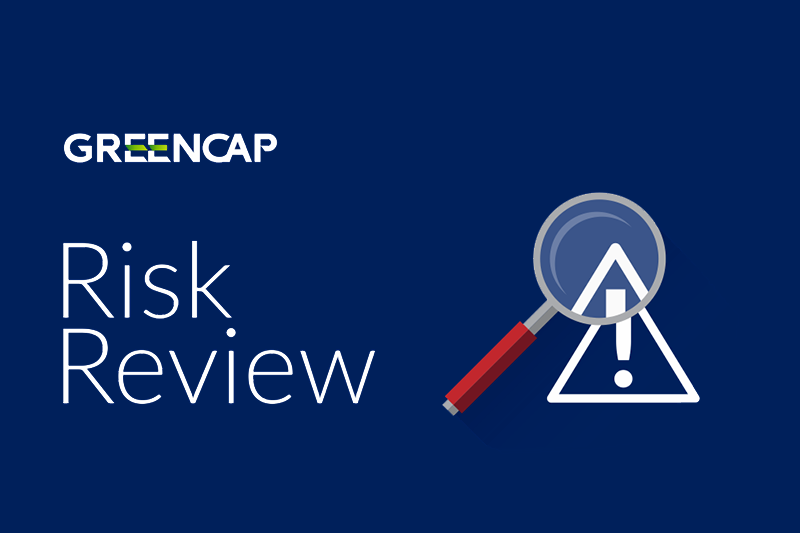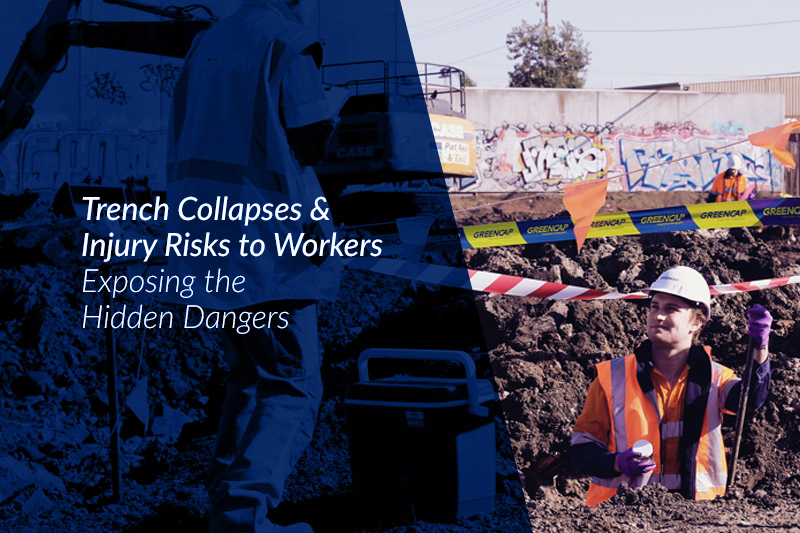News & Insights
Clandestine Drug Laboratories Risks & Remediation
Australia’s first clandestine drug laboratory (Clan Lab) was detected in Sydney in 1976. These illicit operations can be set up in private, commercial and mobile property and pose risks to human health, the property and the surrounding environment. With state governments investigating the implementation of mandatory screening of rental properties, there are implications for those involved in real estate, property management, property investors and owners, social housing providers and short-term accommodation providers.
The Australian Criminal Intelligence Agency’s Illicit Drug Data Report reported the sixth consecutive decline in detected clan lab numbers in the 2017-2018 reporting period however Australian law enforcement agencies detected more than 400 nationally (Illicit Drug Data Report 2017-18). With these law enforcement agencies estimating that only 10% are being detected, there is great potential for the number of clan labs in Australia to be much greater than initially believed.
What is a Clandestine Drug Laboratory?
A clan lab is a residence, storage shed, vehicle or other structure which either has, or could be used to illicitly produce recreational drugs, poisons or other controlled substances.
The Australian Government’s Clandestine Drug Laboratory Remediation Guidelines demonstrates the diversity of locations utilised for clan labs, including:
- Residences, both suburban and inner-city high rise
- Commercial and industrial premises
- Remote rural properties
- Hotel and motel rooms
- Watercraft
- Mobile labs mounted in commercial vehicles
- Mines
- Purpose built underground facilities
Risks & Health Effects of Clandestine Drug Operations
There are well documented health impacts posed to the users of the final products and those who “cook” them however, there is currently less documentation and information regarding the possible health impacts posed by the occupants of neighbouring properties and the future occupants of the properties used. These parties are likely exposed to the final product, in addition to the chemical intermediates and wastes produced throughout the production process. With the illicit nature of these operations, wastes are rarely disposed of in a responsible manner, often being poured in the rear yard, down storm water drains and/or dumped on vacant properties.
In the case of methamphetamine laboratories, methamphetamine is produced in the final stage of the reaction, however, chemical intermediates are produced throughout the process and the contamination which remains in these laboratories is persistent. The level of contamination present in a structure is dependent on the size of the laboratory, the frequency with which cooking was undertaken and the overall time frame in which the laboratory was active.
Health effects may result, dependent on a number of factors including the level of contamination remaining within a property, the nature of the contamination and the length of time the person is exposed to the contamination. The health effects resulting from exposure to contamination associated with a methamphetamine drug laboratory are broad and range from irritation of the skin or mucous membranes (eyes, nose and throat) to irritability and mood changes, sleep pattern disturbance, lack of concentration and neurological development impairment. Those at greatest risk include children, pregnant women and those with certain medical conditions.
Clandestine Drug Laboratory Detection in Australia
Illicit methamphetamine laboratories are the most commonly detected clandestine drug laboratories in Australia. The unfortunate prevalence of readily available recipes online that are not necessarily informed by formal chemistry study results in increased risks associated with the use of hazardous and the possibly incompatible chemicals.
70.8% of the laboratories detected in 2017-18 were detected in residential areas, increased from the 2016-17 report. The majority of these were small-scale laboratories producing substances for personal use, often with the use of improvised equipment and chemicals including drain cleaners.
For such small-scale laboratories, it is possible to fit all the equipment required to manufacture an illicit substance in a small suitcase or container. These laboratories are termed “box labs” and their smaller size and increased portability make detection by law enforcement agencies more difficult. This has also been an influencing factor in the ability to manufacture these substances in the metropolitan area, as opposed to rural areas. Smaller sized laboratories result in smaller production batches, though, depending on the method, possibly increased yields which subsequently leads to decreased emissions and odours being produced during the process.
Clandestine Drug Laboratory Remediation
In most cases, former clandestine drug laboratories are able to be remediated successfully however, some may require demolition. The Australian Government released the Clandestine Drug Laboratory Remediation Guidelines in 2011 . These Guidelines formalise the process and requirements for assessors and remediation companies involved in the clean-up of former clan labs, including relevant tertiary (University) qualifications and experience to be held by the assessors.
The guidelines outline four phases of clan lab site remediation:
1. Trigger for assessment
2. Preliminary assessment and action
3. Site assessment and remediation
4. Validation
Risks & Obligations for Business
Several Australian states are currently investigating the introduction of mandatory screening of rental properties, including social housing properties, between tenancies.
Additionally, there are implications for real estate agents, property management organisations, private investment property owners, social housing providers and short-term accommodation providers/platforms. Whilst the specific legislative mechanisms may vary across Australia, each jurisdiction has the ability, through various departments, agencies and pieces of legislation and regulation, to require screening testing, should they choose to follow the lead of those states already investigating this requirement.
With increasing awareness of the issues posed by clan labs in the community, home buyers are also becoming increasingly astute and are starting to consider screening tests whilst making purchase offers on properties listed for sale.
Case Study - Property Foreclosure, South Australia
Following a foreclosure, a residential property was listed for sale. Open inspections were conducted and an offer was made and accepted, subject to a satisfactory building inspection.
A building inspector was engaged and conducted methamphetamine screening tests, despite not being a standard inclusion in Building Inspections throughout Australia. These screening tests revealed methamphetamine contamination exceeding the 0.5mg/100cm2 Investigation Level for residential dwellings, as set in the Clandestine Drug Laboratory Remediation Guideline.
The purchase offer was subsequently retracted, the property listing removed and the financial institution in possession of the property was charged with navigating the assessment and remediation process. An assessor was engaged to undertake surface sampling however, when the report was submitted to the Local Government, the report was not accepted as the assessor did not possess the qualifications required by the Guidelines.
The Local Government Authority provided some information regarding qualified assessors to the Real Estate Agent who subsequently engaged Greencap to undertake an assessment of the property. Contamination was confirmed and a Remediation Action Plan prepared.
Remediation has recently been completed and Greencap returned to the property to undertake a Post Remediation Verification Assessment. All contamination is now below the Investigation Level and a clearance report is being prepared for the client, enabling the property to be relisted for sale following the report's acceptance by the Local Government Authority.
As a result of not understanding the process and requirements, the financial institution incurred the costs of hiring two separate assessment companies and two separate remediation companies, as well as having the property sitting vacant for approximately 8 months longer than necessary. Had a qualified assessor, like Greencap, been engaged initially, the property would have been adequately assessed and the property may have been listed for sale faster than it has been, saving the financial institution time and money.
How Greencap Can Help
Greencap are experienced, industry-recognised experts in clandestine drug laboratory assessment and the post-remediation verification of former or suspected former clandestine drug laboratories. The experienced team also provide Remediation Action Plans for the clean-up of these properties and provide Clearance Documentation, verifying that properties are suitable for human habitation.
The typical process Greencap recommends involves:
![]()
An initial assessment of a property
![]()
Development of a remedial scope of works
(if required)
![]()
The undertaking of a post-remediation verification assessment
Undertaken at the completion of remedial works to demonstrate the former clan lab has been appropriately remediated.
The information in this material is not intended to provide, and should not be relied upon, for legal or professional advice and is subject to change.
This material provides general information only and does not take into account your particular needs or circumstances. Before making any decisions, you should assess whether this material is appropriate for you and obtain legal advice tailored to you having regard to your particular needs and circumstances.
Greencap Pty Ltd (Greencap), its officers, employees and agents believe that the information in this material and the sources on which the information is based (which may be sourced from third parties) are correct as at the date of publication. While every care has been taken in the preparation of this material, no warranty of accuracy or reliability is given and no responsibility for this information is accepted by Greencap, its officers, employees or agents. Except where contrary to law, Greencap excludes all liability for this information.
If this material contains links to third party websites, Greencap does not control and is not responsible for the information contained within these websites. None of these links imply Greencap’s support, endorsement or recommendation of any other company, product or service.



Greencap acknowledges the Traditional Owners of Country throughout Australia and recognises their continuing connection to land, waters and culture. We pay our respects to their Elders past, present and emerging.


